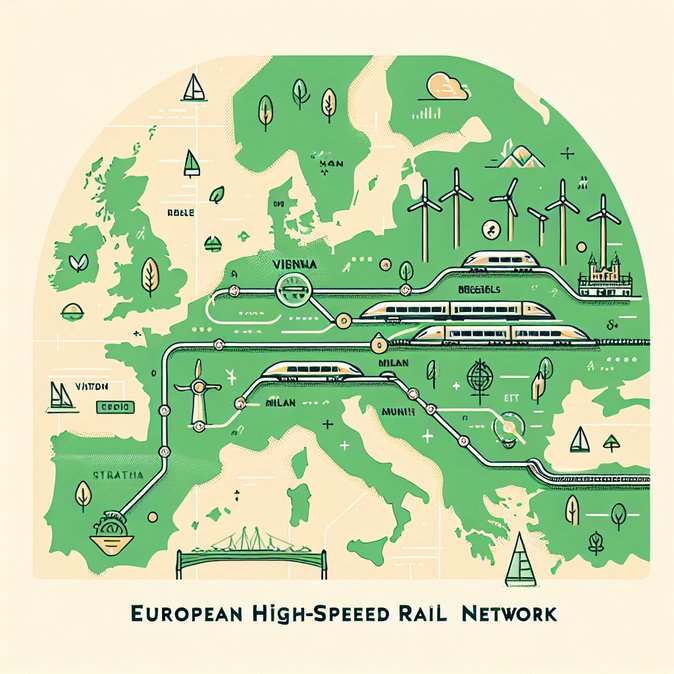
The European Commission chose 6 November 2025 to publish a long-awaited blueprint for an integrated high-speed rail (HSR) network that will slash travel times between 15 capitals by 2030. The Time Out report highlights that trains running at up to 250 km/h will connect Brussels to Venice via Cologne, Munich, Innsbruck and Vienna, effectively making Austria the Alpine fulcrum of the project.
For Austria, the plan dovetails with domestic infrastructure milestones such as the December 2025 opening of the Koralm Railway and the Semmering Base Tunnel’s scheduled 2028 completion. Together, these links will funnel HSR traffic through Vienna and Graz onto north-south corridors to Italy and east-west arteries toward Germany and the Benelux countries. The Commission projects that door-to-door travel from Vienna to Brussels could fall from ten hours (day train) or 13 hours (overnight) to just under six.
![EU Unveils High-Speed Rail Masterplan With Vienna as Central Alpine Hub]()
Business-mobility implications are significant. Multinationals with Austrian headquarters stand to save both time and carbon: rail emissions per passenger-kilometre are up to 90 % lower than short-haul flights. Many corporates have embedded “rail-first” clauses for journeys under six hours; the new network extends that envelope across much of Western Europe. Relocation programmes could also shift: staff posted to Austria from Benelux or southern Germany may opt for weekly commuting by rail rather than full relocation, affecting housing allowances and tax footprints.
Implementation challenges remain. Funding must still be finalised under the Connecting Europe Facility, and cross-border signalling interoperability is a known pain point. Austria’s Transport Ministry confirmed that €1.6 billion has already been earmarked for ETCS Level 2 upgrades on lines feeding into the new corridors. Procurement teams should monitor project-tender notices in early 2026. In the meantime, mobility managers can prepare by updating travel-policy thresholds and forecasting demand for Austrian Federal Railways’ (ÖBB) Nightjet services, many of which will be recast as “Dayjet” high-speed runs after 2028.
For Austria, the plan dovetails with domestic infrastructure milestones such as the December 2025 opening of the Koralm Railway and the Semmering Base Tunnel’s scheduled 2028 completion. Together, these links will funnel HSR traffic through Vienna and Graz onto north-south corridors to Italy and east-west arteries toward Germany and the Benelux countries. The Commission projects that door-to-door travel from Vienna to Brussels could fall from ten hours (day train) or 13 hours (overnight) to just under six.

Business-mobility implications are significant. Multinationals with Austrian headquarters stand to save both time and carbon: rail emissions per passenger-kilometre are up to 90 % lower than short-haul flights. Many corporates have embedded “rail-first” clauses for journeys under six hours; the new network extends that envelope across much of Western Europe. Relocation programmes could also shift: staff posted to Austria from Benelux or southern Germany may opt for weekly commuting by rail rather than full relocation, affecting housing allowances and tax footprints.
Implementation challenges remain. Funding must still be finalised under the Connecting Europe Facility, and cross-border signalling interoperability is a known pain point. Austria’s Transport Ministry confirmed that €1.6 billion has already been earmarked for ETCS Level 2 upgrades on lines feeding into the new corridors. Procurement teams should monitor project-tender notices in early 2026. In the meantime, mobility managers can prepare by updating travel-policy thresholds and forecasting demand for Austrian Federal Railways’ (ÖBB) Nightjet services, many of which will be recast as “Dayjet” high-speed runs after 2028.










